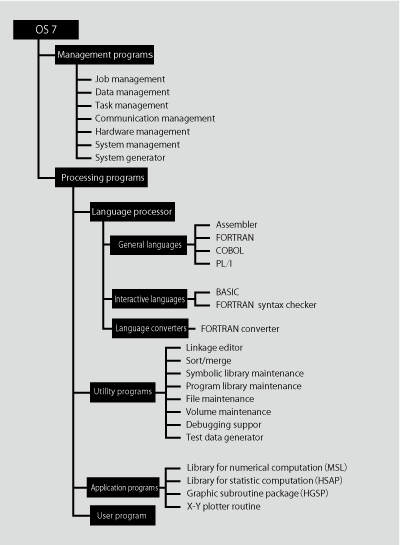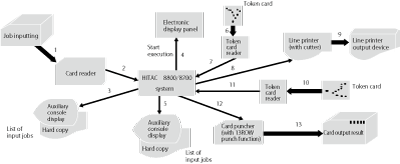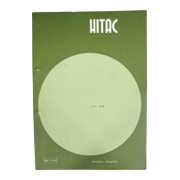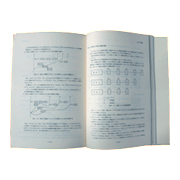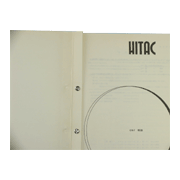OS7, which Hitachi developed as the OS for HITAC 8700/8800, was a large-scale software system that supported a virtual space and multiple processors. At that time, its scale ranked at highest level in the world.
Hitachi announced OS7 in November 1970, and started shipping it in October 1972.
OS7 had the following features:
| Feature | Description |
|---|---|
| Adoption of virtual storage | The OS allows the user to use a large address space and create a program beyond the framework of the conventional overlay structure. In addition, a swapping mechanism using a high-speed magnetic drum is adopted in order to achieve a large virtual space on the core storage. |
| Support for interactive processing and remote batch processing | The center can simultaneously open up interactive processing and remote batch processing to the user, in addition to batch processing and the real-time processing. In addition, because programs, commands and user files are configured under the same system, extensive flexibility is ensured, such as use of the results of batch processing in interactive processing. |
| Increased availability | The OS supports multi-processor and duplex configurations, and means to cope with faults are taken into account. |
| Function for managing jobs and files |
The OS encourages laborsaving in center operation through job stacking, efficient scheduling, control of effective system resource use, and reduction in the operator’s workload. In addition, it provides various methods for accessing files to achieve simplified handling of files, as well as a catalog function. It is also equipped with security mechanisms such as storage protection at the ring level. |
| Powerful language processor system | Provides a FORTRAN compiler with an advanced optimization function, PL/I, COBOL, assembler, interactive language BASIC and a FORTRAN syntax checker. |
| Easy-to-use utility programs |
Equipped with utility programs such as a linkage editor, a sort/merge program, a program for maintaining libraries, a program for maintaining files, a program for maintaining volumes, a program for debugging support and a test data generator. Allows the user to also handle these as batch jobs in commands of the same system from a terminal, increasing processing efficiency. |
Figure 1 shows the software configuration for OS7.


